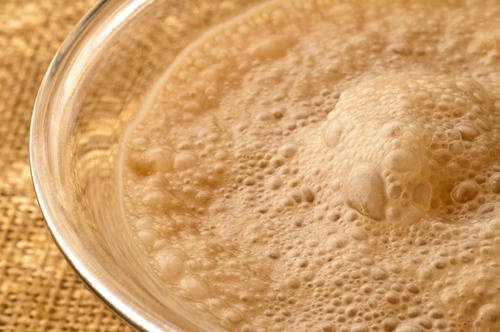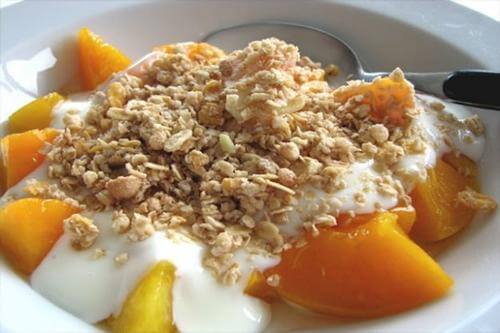Benefits of Taking Brewer’s Yeast


Written and verified by psychologist Valeria Sabater
Do you already know the wonderful benefits of brewer’s yeast? Or have you not tried it yet? If that’s the case and you haven’t included this very beneficial nutritional supplement in your breakfast routine, then you must read this article to convince yourself of how many benefits it has.
We’re sure you’ll be convinced there’s nothing better than including brewer’s yeast in your first meal of the day in order to enjoy a better quality of life. Furthermore, it’s very suitable for everyone in the family! How can you resist that?
What exactly is “brewer’s yeast”?
If you don’t already know, brewer’s yeast is used to make beer. You may associate it with that classic alcoholic beverage which, as you know, uses grain and malt as its base ingredients. Well, firstly we’d like to say that you can find this nutritional supplement in health food stores or in specialty food supermarkets, as well as in pharmacies. It’s not expensive and goes well with many foods.
You can find it in capsules, liquid or even powder form. We recommend this last option being the most. Don’t be surprised when we tell you that brewer’s yeast is actually a type of fungus. People have known about it since ancient times. And it’s incredibly beneficial for our health. Brewer’s yeast comes from an adequate fermentation process which results in a substance rich in a variety of proteins, vitamins and minerals.
Do you want to know all that brewer’s yeast can do for us?
1. A treasure of natural nutrients

Are you going through a period where more tired than usual? Have you noticed that your hair is falling out? That your nails are more fragile and break easily? Then don’t hesitate to try this out. Take brewer’s yeast in the mornings and you’ll see how, in just a little bit of time, you’ll feel better. And it’s all thanks to these properties:
- For every 100 grams (3.5 ounces) of brewer’s yeast, there are about 8 grams (0.3 ounces) of protein.
- It’s very rich in B complex vitamins, perfect to fortify your hair and nails.
- It’ll help you synthesize enzymes and hormones that help to care for your heart health, strengthen your arteries and promote blood circulation.
- Brewer’s yeast is rich in amino acids, fiber and minerals such as iron, zinc, magnesium and chromium.
2. Avoid constipation

Is it hard for you to go to the bathroom? Are you someone that regularly suffers from annoying constipation? If so, you should know that brewer’s yeast is very rich in fiber. Therefore, it’s perfect to regulate our intestinal tract and avoid this common problem that almost always affects women.
In addition, it strengthens our intestinal flora and helps prevent painful gas and abdominal bloating.
3. Combats fatigue and gives us energy

Brewer’s yeast is very beneficial for people who are recovering from something or for children who have a vitamin deficiency. It’s also beneficial when we’re suffering from anemia or we feel more tired than usual due to stress. Don’t hesitate to include this nutritional supplement in your breakfast routine. You’ll see you begin to feel much better little by little.
The reason we recommend eating brewer’s yeast in the mornings is because this way you’ll enjoy a day with more energy. You can notice it’s effects for several hours.
How do you eat brewer’s yeast in the mornings?

Option 1
- Greek yogurt with 30 grams (1 ounce) of powdered brewer’s yeast, mixed with a sliced plum.
- An omelet with spinach.
Read also:
Homemade Greek Yogurt Recipe
Option 2
- A cup of coffee.
- An apple blended with 30 grams (1 ounce) of brewer’s yeast and a little bit of cinnamon powder.
- Toasted rye bread with a few drops of olive oil.
Option 3
- A bowl of oatmeal with 30 grams (1 ounce) of brewer’s yeast, along with 2 walnuts and a few strawberries.
- A cup of green tea.
Read also:
Option 4
- A glass of lukewarm water with lemon.
- A bowl of mixed fruits: two strawberries, one pear and five grapes. On top you can add natural Greek yogurt mixed with 30 grams (1 ounce) of brewer’s yeast.
Option 5
- A boiled egg cut into slices with two cherry tomatoes.
- A glass of papaya juice mixed with 30 grams (1 ounce) of brewer’s yeast.
- A cup of white tea.
Option 6
- A rye bread sandwich with sliced turkey breast.
- A glass of oat water mixed with 30 grams (1 ounce) of powdered brewer’s yeast.
Option 7
- A cup of coffee
- Whole wheat toast with plum jam.
- An apple cut into pieces with 2 walnuts and 30 grams (1 ounce) of brewer’s yeast sprinkled on top along with a little bit of cinnamon.
Which one will you try today?
All cited sources were thoroughly reviewed by our team to ensure their quality, reliability, currency, and validity. The bibliography of this article was considered reliable and of academic or scientific accuracy.
- Cordell, B.; McCarthy, J. (2013). “A Case Study of Gut Fermentation Syndrome (Auto-Brewery) with Saccharomyces cerevisiae as the Causative Organism”. International Journal of Clinical Medicine 04 (7): 309. doi:10.4236/ijcm.2013.47054.
- Cerevisiae, A. (1998). Saccharomyces cerevisiae. Trends in Genetics. https://doi.org/10.1016/S0168-9525(98)80006-1
- Moyad, MA (2008, febrero). Levadura de cerveza / panadería (Saccharomyces cerevisiae) y medicina preventiva: Parte II. Enfermería Urológica, 28 (1), 73-75. Obtenido de
nlm.nih.gov/pubmed/18335702
This text is provided for informational purposes only and does not replace consultation with a professional. If in doubt, consult your specialist.








